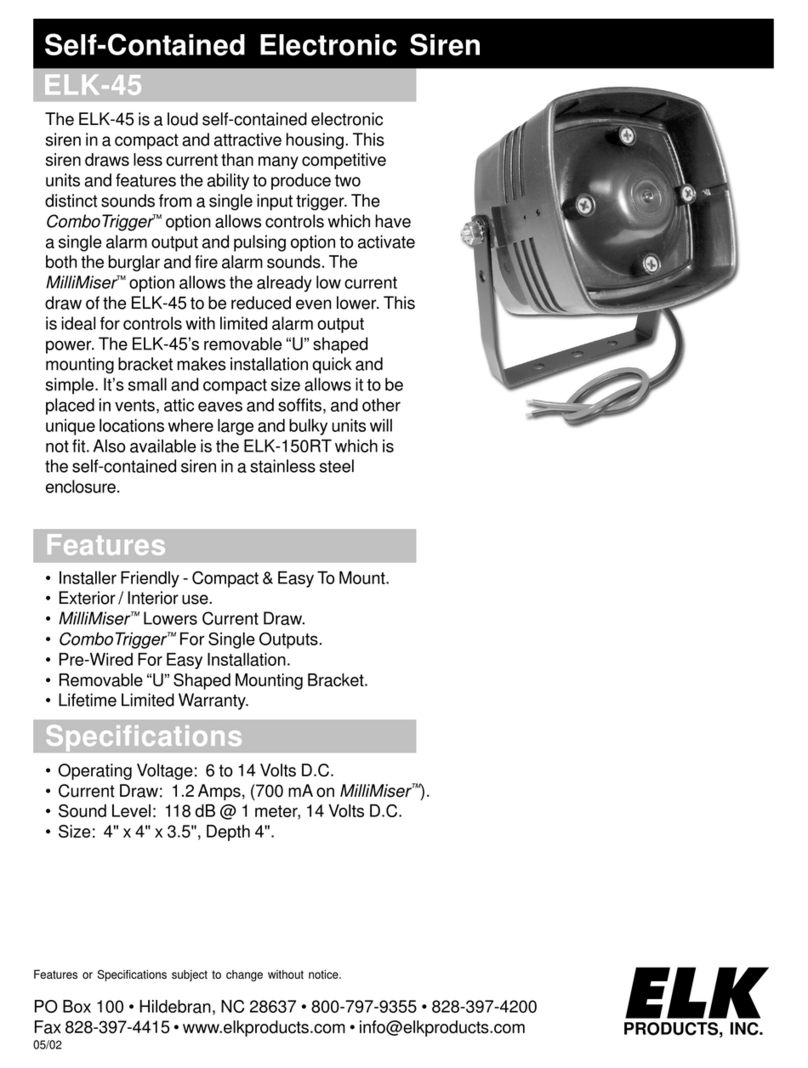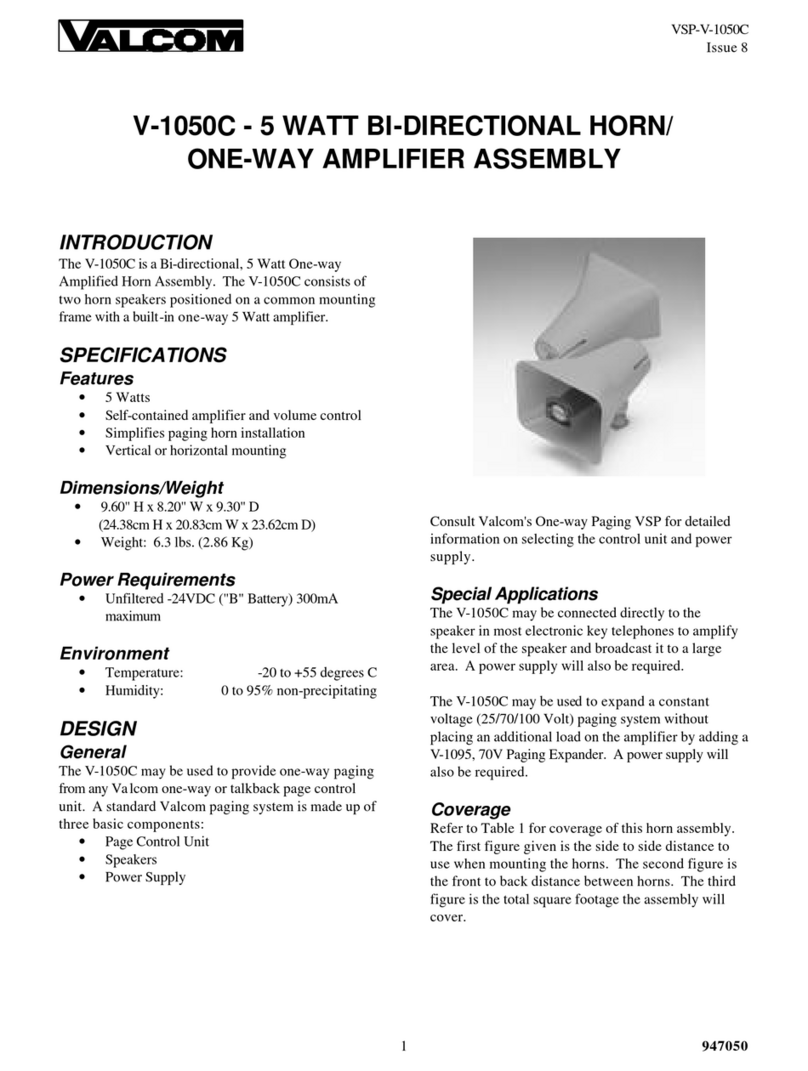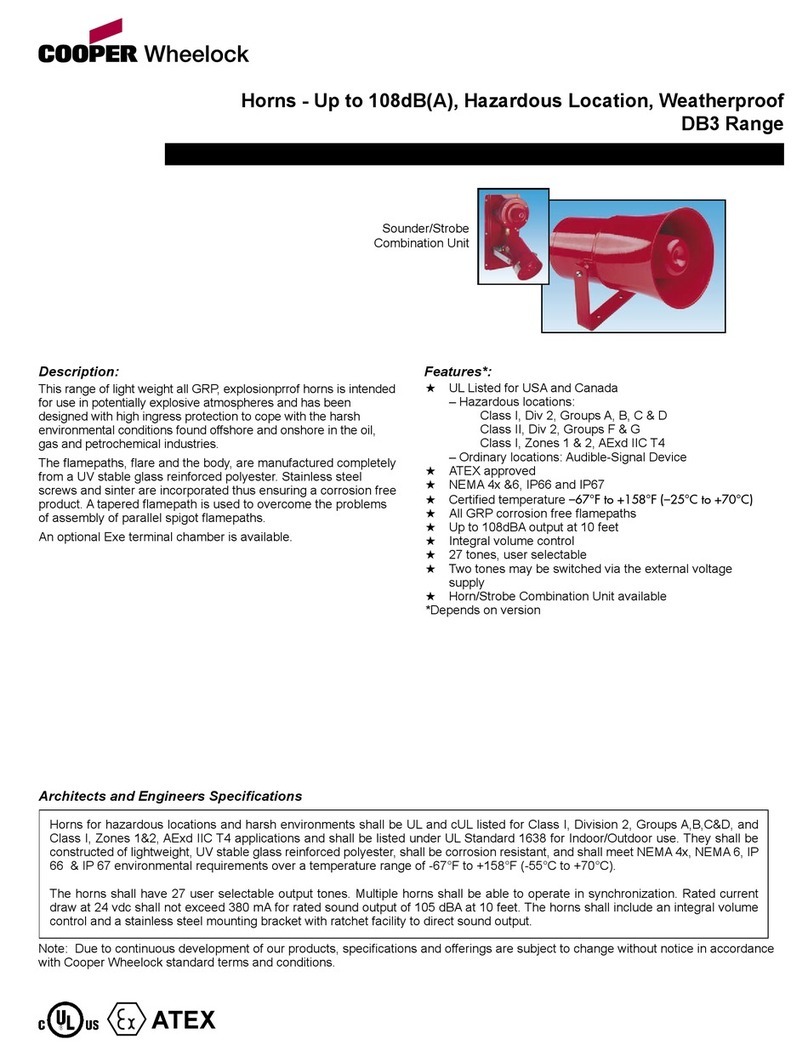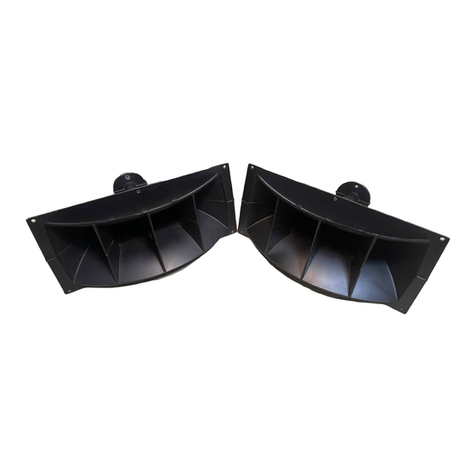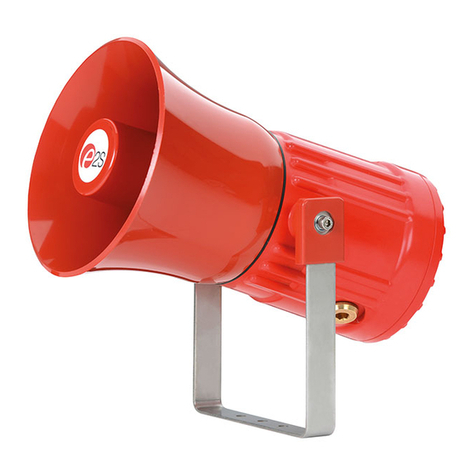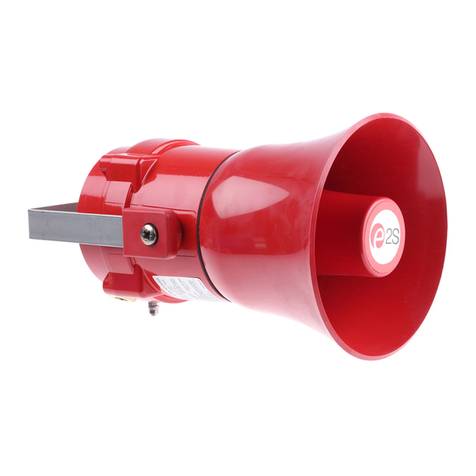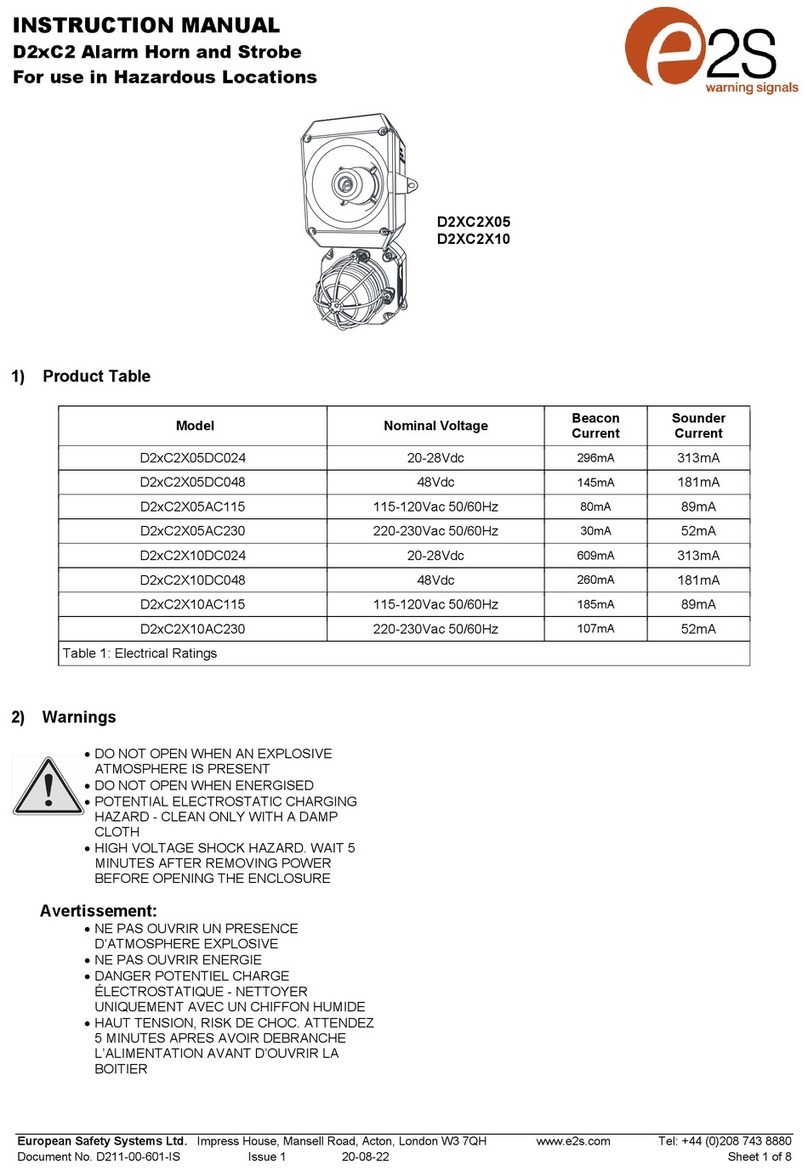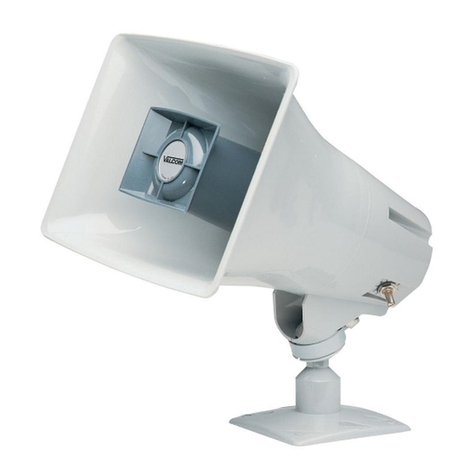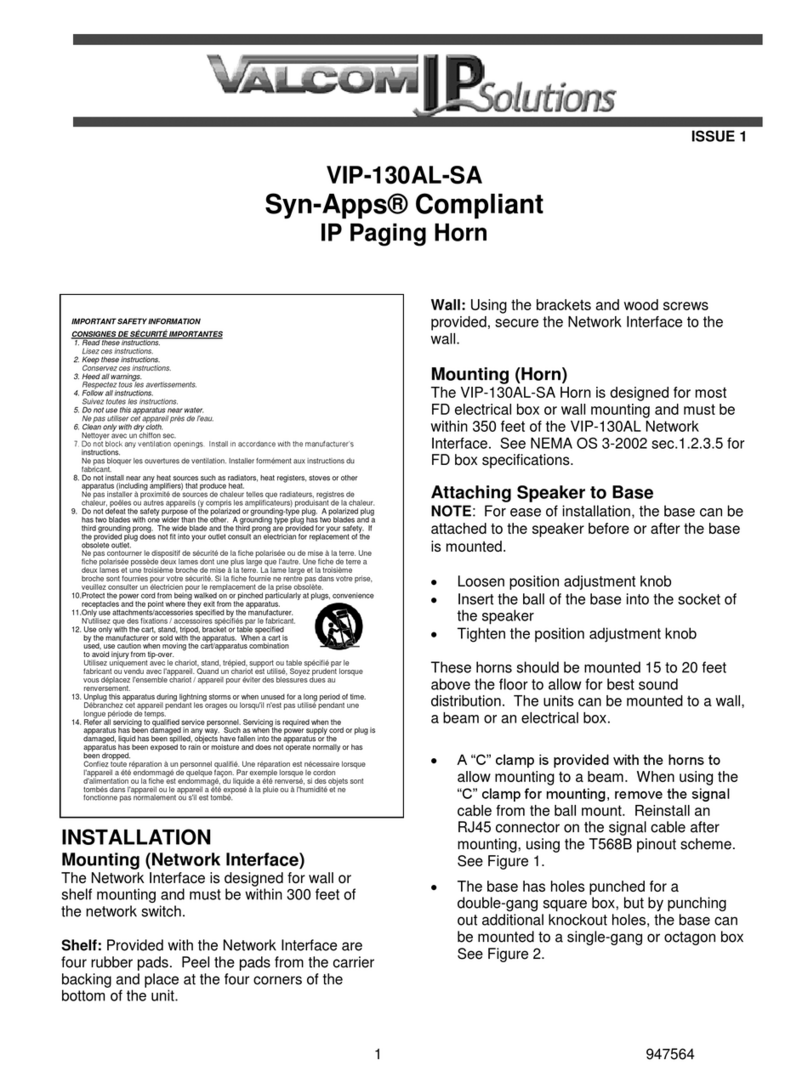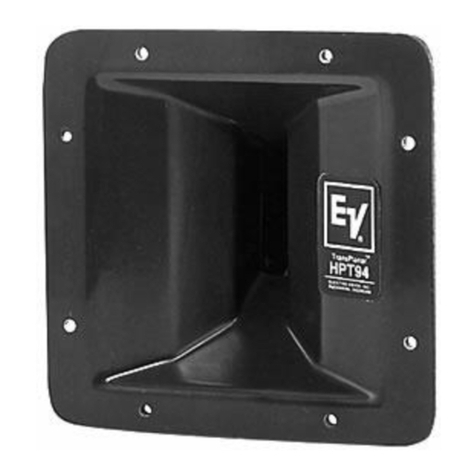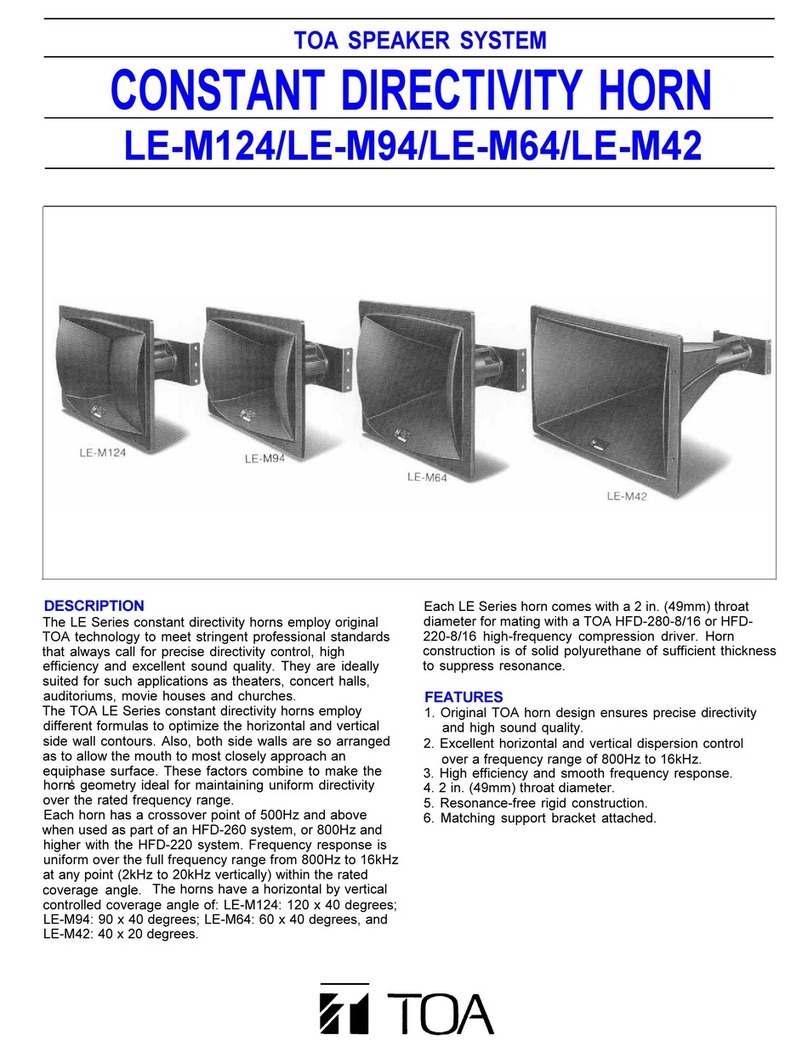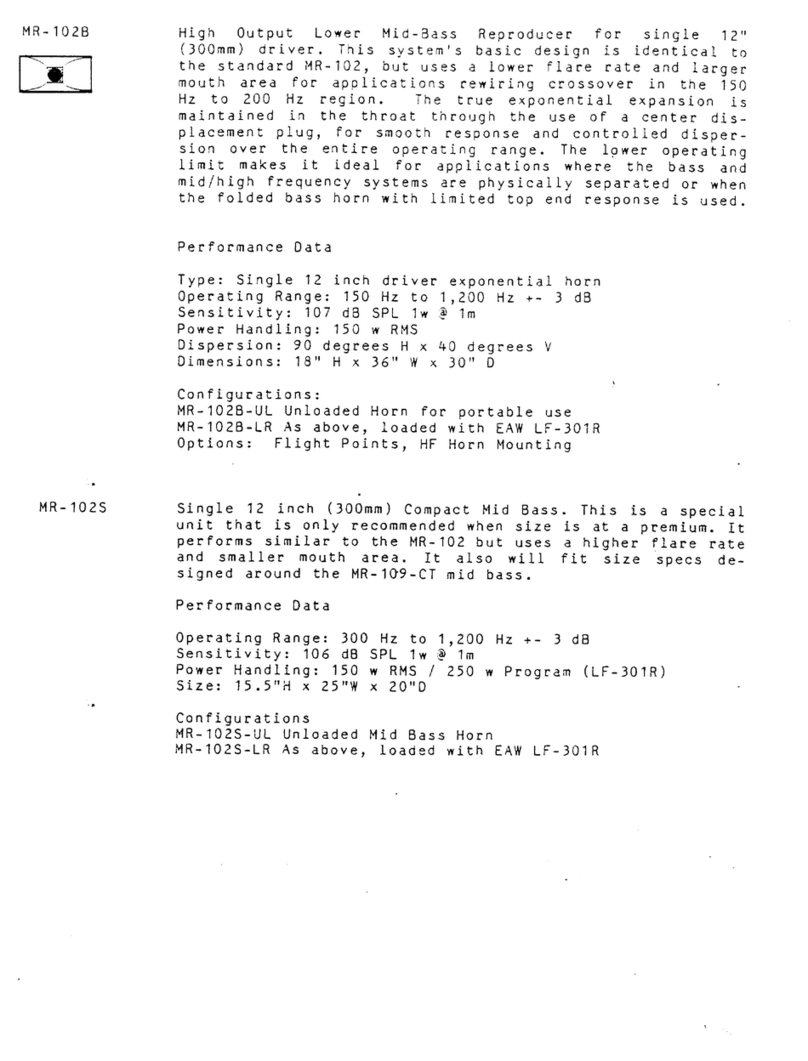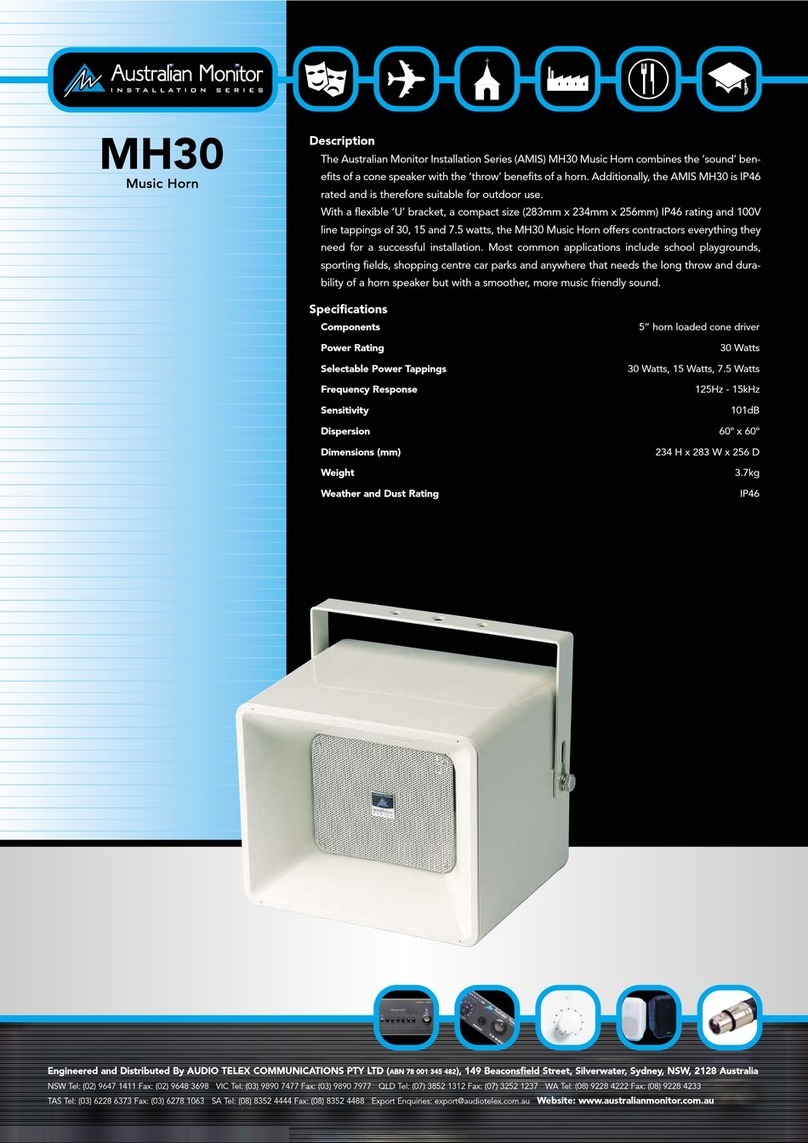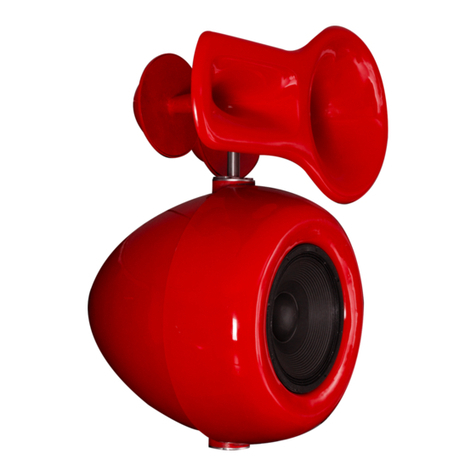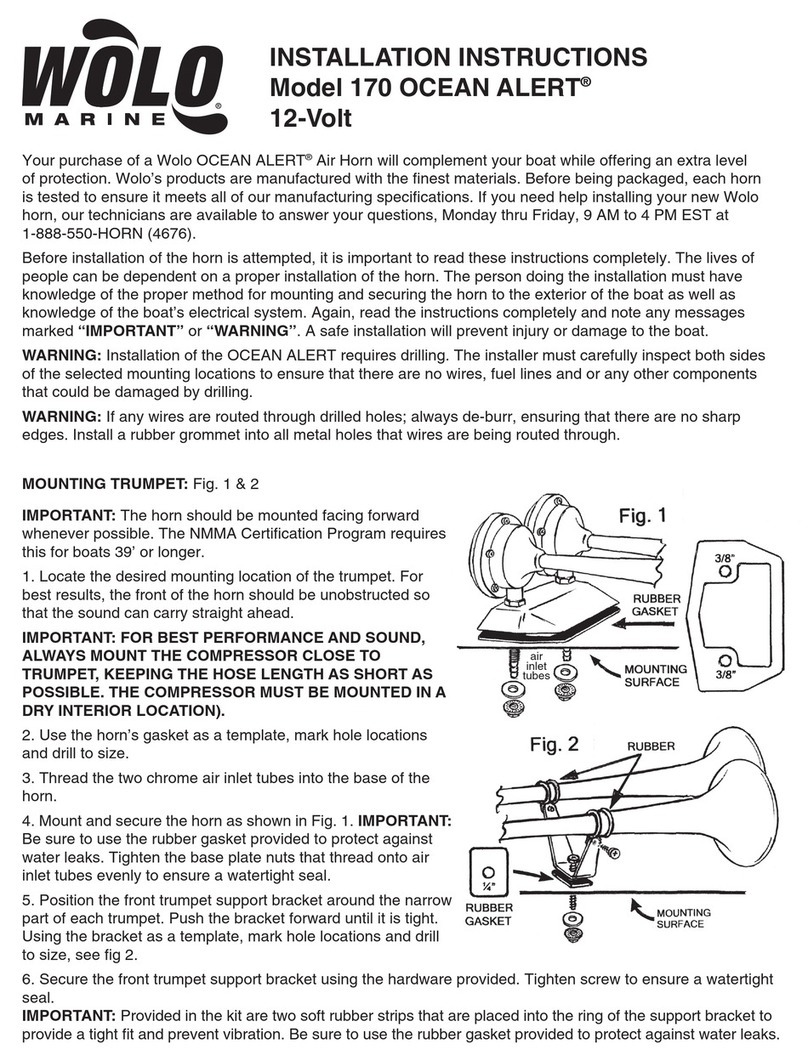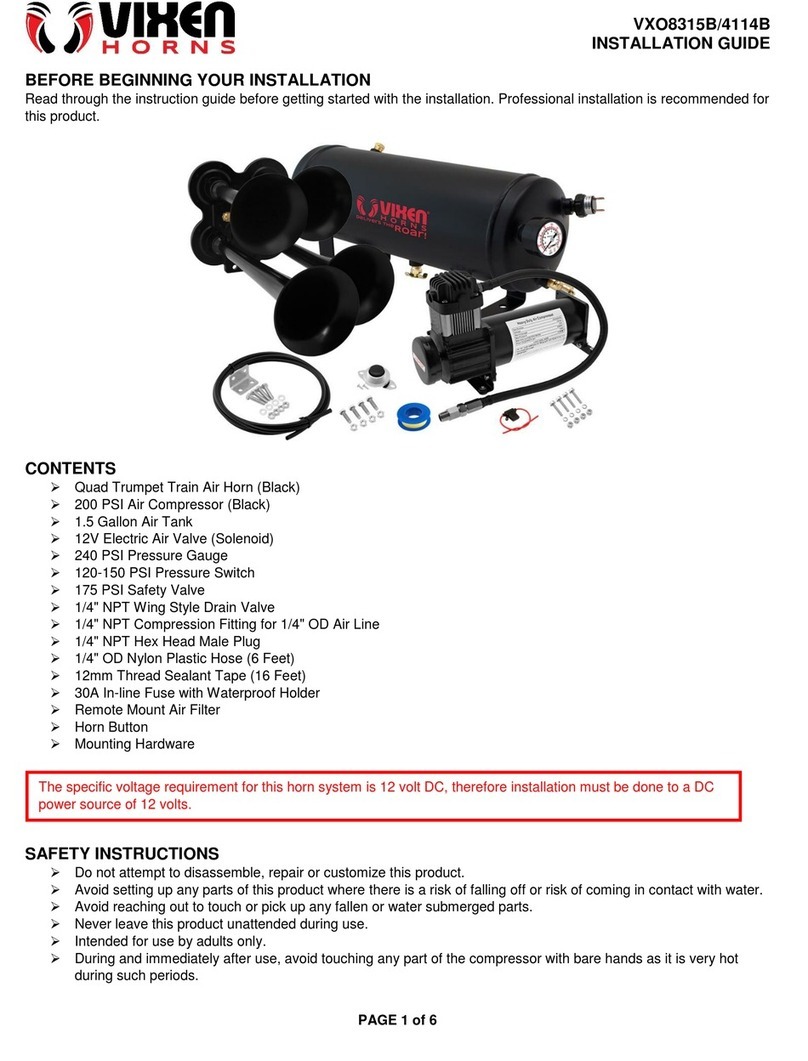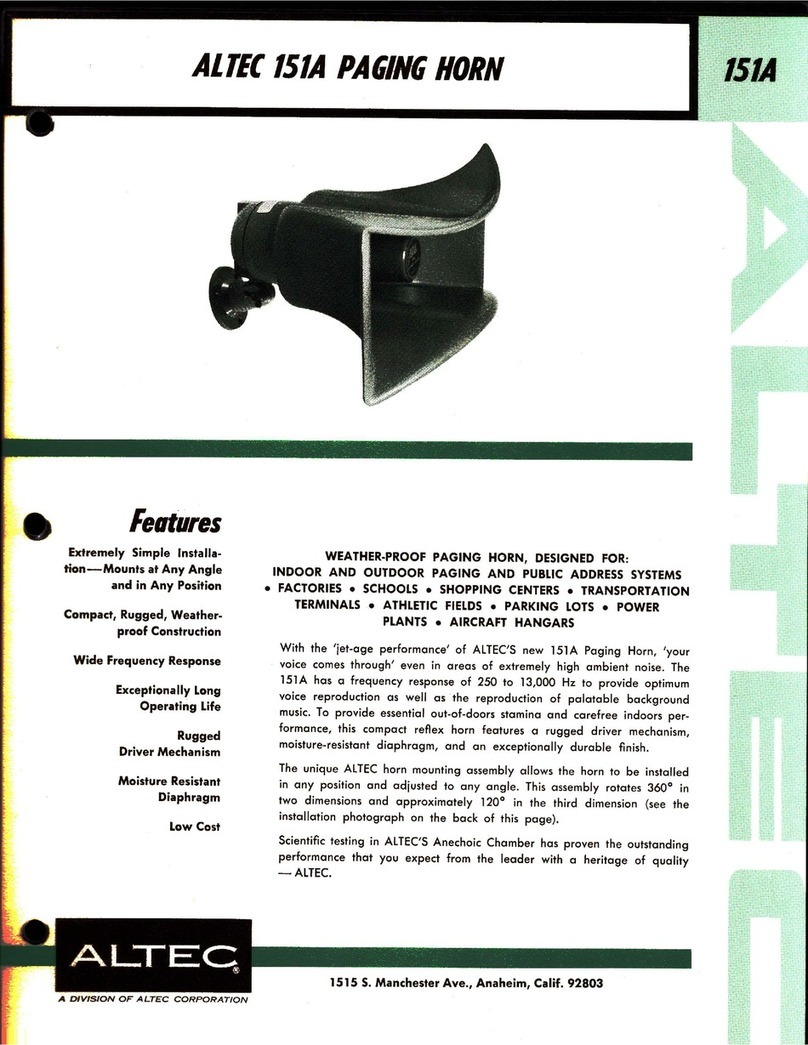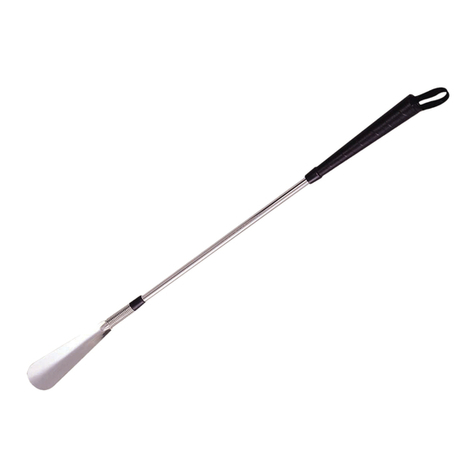
European Safety Systems Ltd. Impress House, Mansell Road, Acton, London W3 7QH
Document No. D190-00-351-IS
6) Product Mounting and Access
6.1 Mounting
Fig 1: Mounting Locations
6.2 Installation procedure
a. Secure the D1x unit to a flat surface via the three 7mm
fixing holes in the mounting bracket.
b. Remove the explosionproof cover of the alarm horn by
unscrewing it, taking care not to damage the
explosionproof threads in the process (Refer to section
6.4).
c. Fit an M20/NPTsuitably ratedcable gland orconduit entry
into the hole in the enclosure and connect the field wiring
to the appropriate alarm horn terminals as shown in D190-
06-305 (AC) or. D190-06-301 (DC). The power supply
terminals are duplicated so that units may be connected
in parallel. An end of line monitoring resistor may be fitted
to DC units only (see section 10). If the second and third
M20/NPT entries are not used, suitably rated stopping
plugs must always be fitted.
d. Replace the explosionproof cover of the unit, taking care
not to damage the explosionproof threads. Tighten fully.
6.3 Hornless Variants
6.4 Access to the Explosionproof Enclosure
Fig 2: Accessing the enclosure
To access the Ex d chamber, loosen the M4 grub screw on the
cover. Open the enclosure by turning the cover counterclockwise and
remove the cover.
On completion of the installation the flameproof threaded joint should
be inspected to ensure that they are clean and that they have not
been damaged during installation.
Ensure the O-ring seal is in place and undamaged.
When fitting the flameproof cover ensure the thread is engaged
correctly. Fully tighten the cover all the way, ensure no gap is visible
between the cover and base of the enclosure.
7) Installation Requirements
7.1 Safe Installation Requirements
Warning High voltage may be
present, risk of electric shock.
DO NOT open when energised,
disconnect power before opening.
The sounder must only be installed by suitably qualified
personnel in accordance with the latest issues of the relevant
standards.
7.2 Cable Selection and Connections
Electrical connections are to be made into the terminal blocks on the
PCBA, using solid wire 0.5-4mm2 / AWG 20-12 or stranded wire,
sizes 0.5-2.5mm2 / AWG 24-14. Wire insulation needs to be stripped
8mm. Wires may be fitted securely with crimped ferrules. Terminal
screws need to be tightened down with a tightening torque of 0.45
Nm / 3.5 Lb-in.
When selectingthecablesize, consideration must begivento the input
current that each unit draws (see table 1), the number of sounders on
the line and the length of the cable runs. The cable size selected must
have the necessary capacity to provide the input current to all the
sounders connected to the line.
AC: 1.0 - 2.5mm2/ AWG18 - AWG12
DC: 0.2 - 2.5mm2/ AWG24 - AWG12
Figure 3: Wire Preparation.
When connecting wires to the terminals great care should be taken to
dress the wires so that when the cover is inserted into the chamber
the wires do not exert excess pressure on the terminal blocks. This is
particularly important when using cables with large cross-sectional
areas such as 2.5mm².
